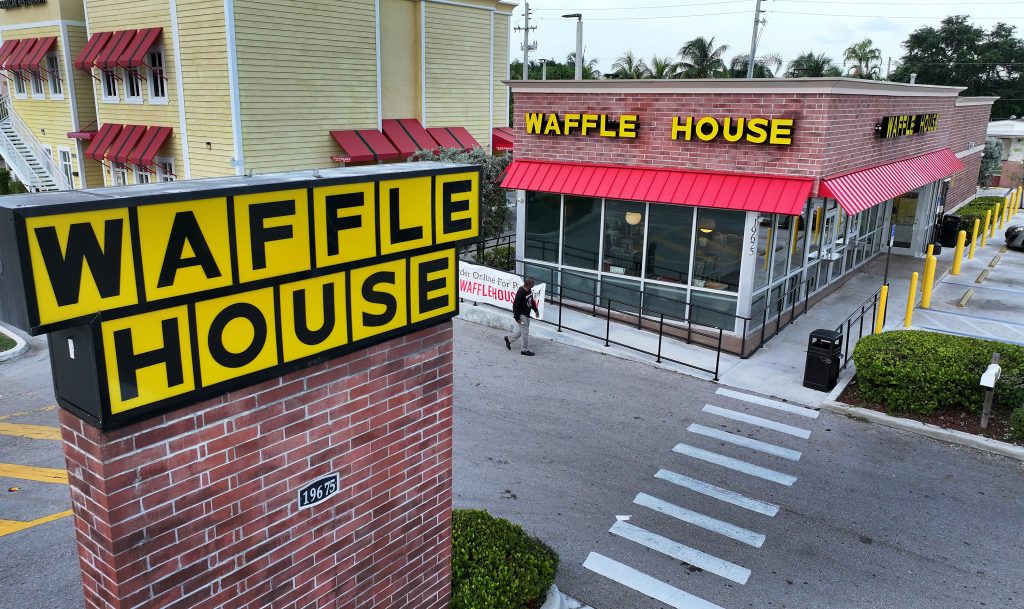Waffle House, a beloved Southern institution renowned for its 24/7 accessibility, affordable prices, and classic diner fare, has implemented a temporary surcharge of 50 cents per egg across its entire menu. This decision, effective Monday, comes in direct response to the escalating cost of eggs, a staple ingredient in many of the chain’s most popular dishes. The surge in egg prices is a consequence of the ongoing bird flu outbreak that has significantly disrupted poultry populations and, consequently, the nation’s egg supply. This surcharge, while seemingly modest, underscores the far-reaching impact of the avian influenza crisis on the food service industry and signals the potential for further price adjustments across the sector.
The temporary egg surcharge at Waffle House, a chain synonymous with consistent and budget-friendly pricing, is a notable indicator of the severity of the supply-chain disruptions impacting restaurants and retailers nationwide. While the company emphasizes its commitment to using “quality, fresh-cracked, Grade A Large eggs,” the necessity of implementing the surcharge highlights the difficult balance businesses face in maintaining quality while managing escalating costs. Waffle House’s decision to implement a targeted surcharge, rather than a blanket price increase across the menu, reflects an attempt to mitigate the impact on consumers while addressing the immediate financial pressures stemming from the egg shortage. This targeted approach may become a model for other restaurants grappling with similar supply-chain challenges in the future.
The current bird flu outbreak, which began with the detection of the H5N9 strain on a California duck farm in January 2024, has exacerbated the already strained egg supply. This rare strain, coupled with the ongoing H5N1 outbreaks, has led to the culling of nearly 119,000 birds in California alone, further constricting the availability of eggs. This scarcity has rippled through the retail sector, prompting major grocery chains like Publix and Lidl to impose purchase limits on eggs, a stark illustration of the widespread impact of the avian influenza crisis. The situation is further complicated by the virus’s spread to other mammalian species and the documented human cases, including one fatality in Louisiana, adding another layer of concern to the ongoing public health challenge.
The economic ramifications of the bird flu outbreak are becoming increasingly apparent. According to data from the U.S. Department of Agriculture (USDA), wholesale egg prices have experienced significant increases across various regional markets. In the week ending January 31, 2024, prices for large cartons of eggs delivered to retailers jumped by 39 cents to $7.63 per dozen in the New York market, 54 cents to $7.03 per dozen in the Midwest, and 37 cents to $8.72 per dozen in California. These escalating prices reflect the shrinking supply and the increased demand, putting pressure on businesses across the food supply chain.
Waffle House’s decision to implement the surcharge is a direct response to these escalating wholesale prices. The company’s statement emphasizes the unprecedented nature of the price surge, justifying the surcharge as a temporary measure tied directly to the egg market volatility. This transparency aims to reassure customers that the price adjustment is not arbitrary but a necessary response to external market forces. While the company acknowledges the uncertainty surrounding the duration of the surcharge, their commitment to monitoring egg prices and market conditions suggests a willingness to adjust or remove the surcharge as soon as the situation allows. This proactive approach aims to strike a balance between managing costs and maintaining customer affordability.
The USDA, in conjunction with state officials, is intensifying surveillance efforts to monitor the spread of the avian influenza and mitigate its impact. These efforts include comprehensive epidemiological investigations and enhanced surveillance measures, particularly in response to highly pathogenic avian influenza (HPAI) outbreaks. While the Centers for Disease Control and Prevention (CDC) maintains that the current risk to human health remains low, the economic consequences continue to mount, impacting businesses, consumers, and the overall food supply chain. The long-term effects of the bird flu outbreak on egg prices and the broader food industry remain uncertain, requiring ongoing monitoring and adaptive strategies from businesses and government agencies alike. The Waffle House surcharge serves as a tangible example of the challenges posed by the current situation and the need for flexible pricing strategies in the face of unpredictable market forces.










